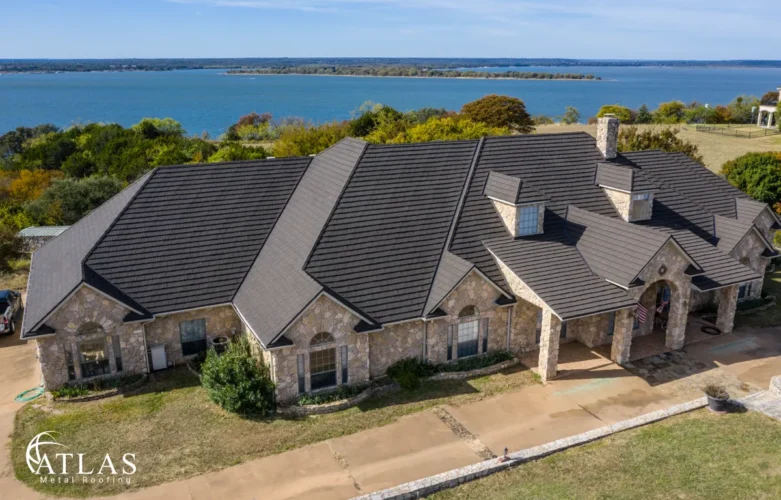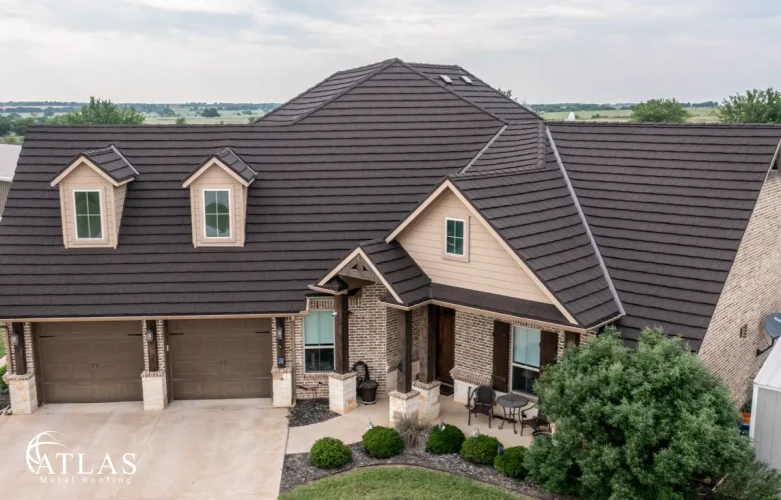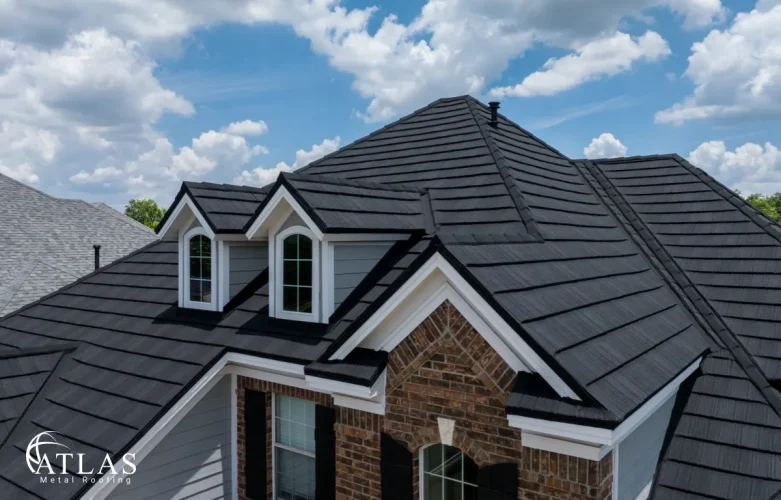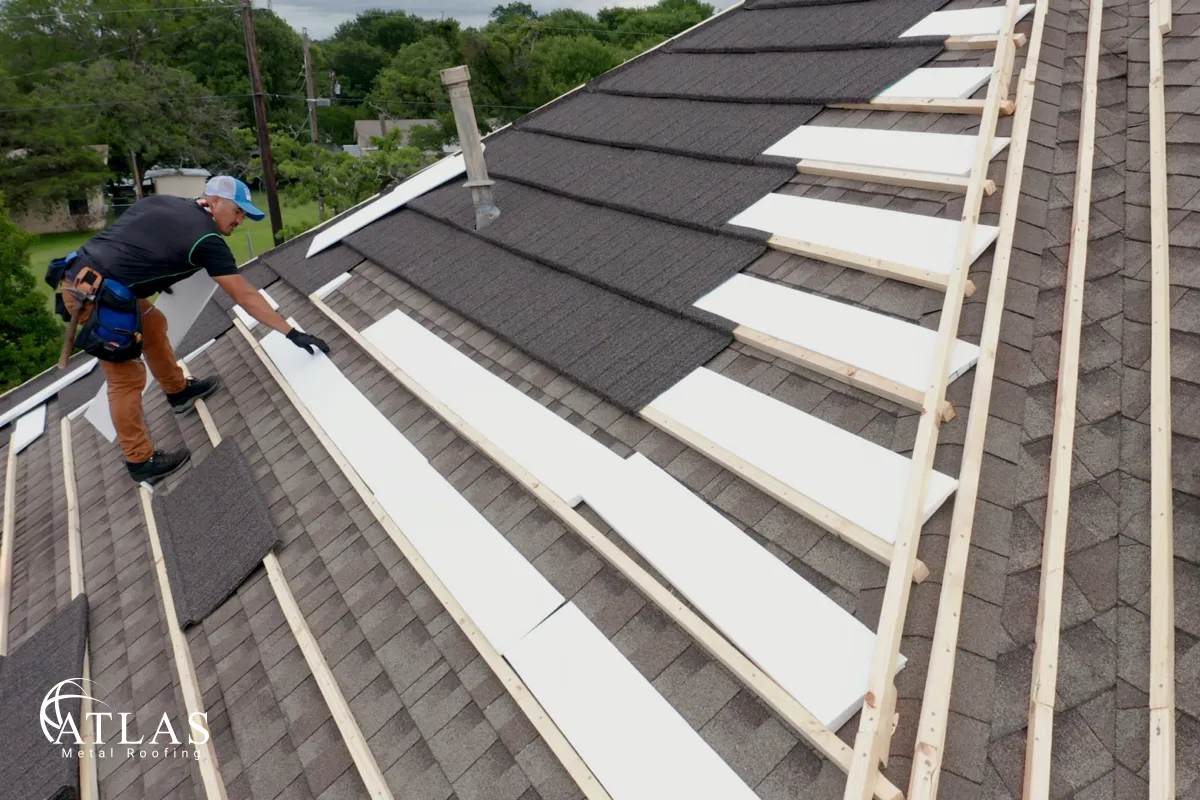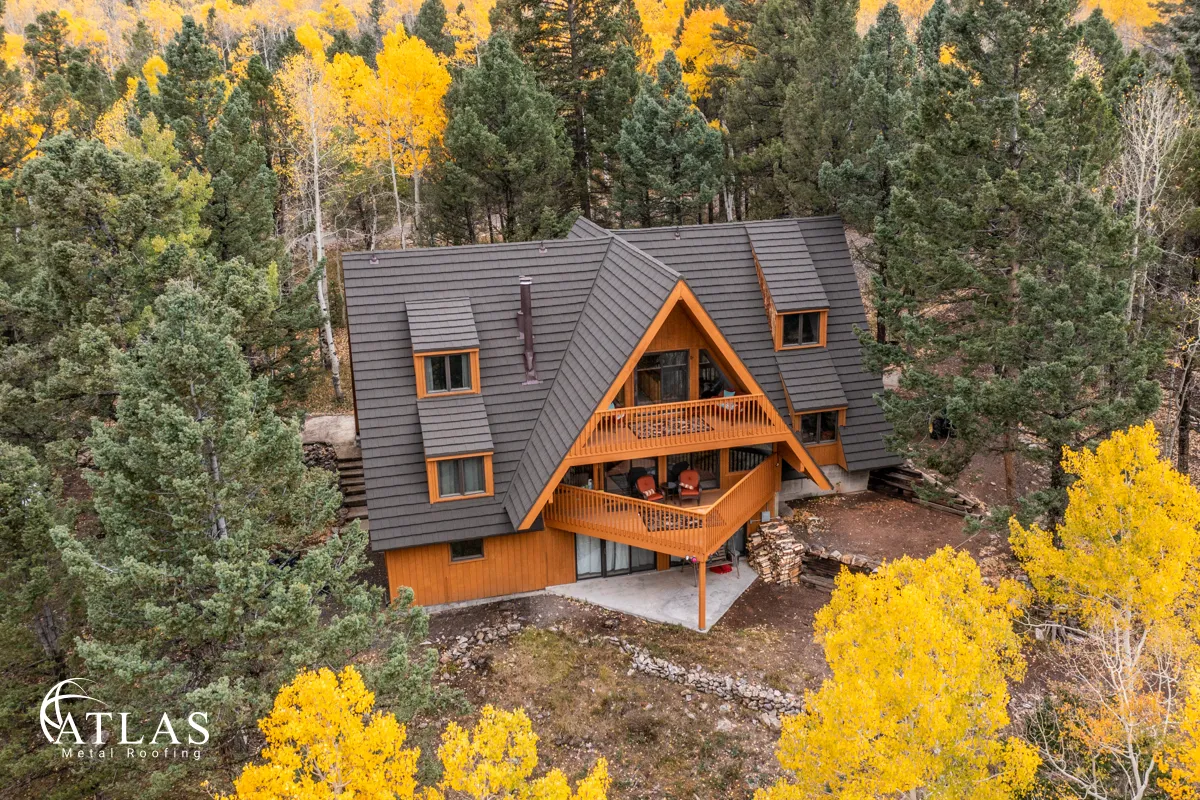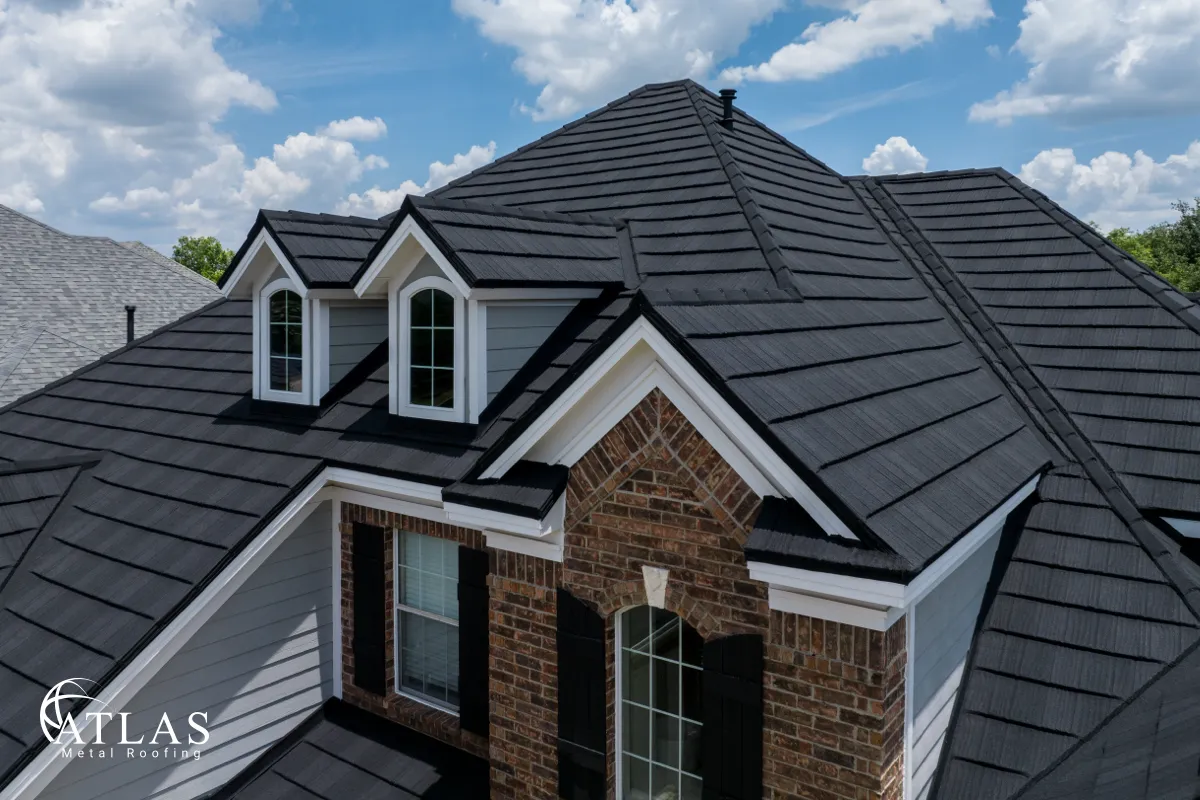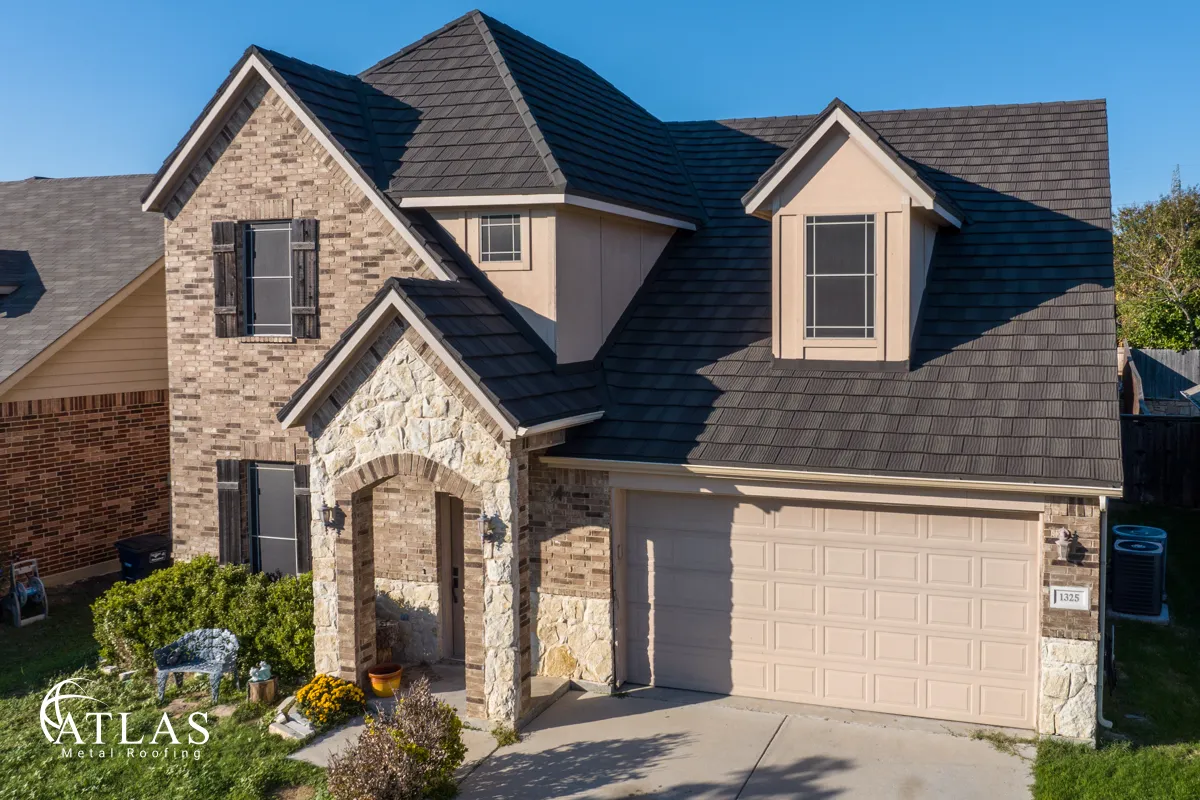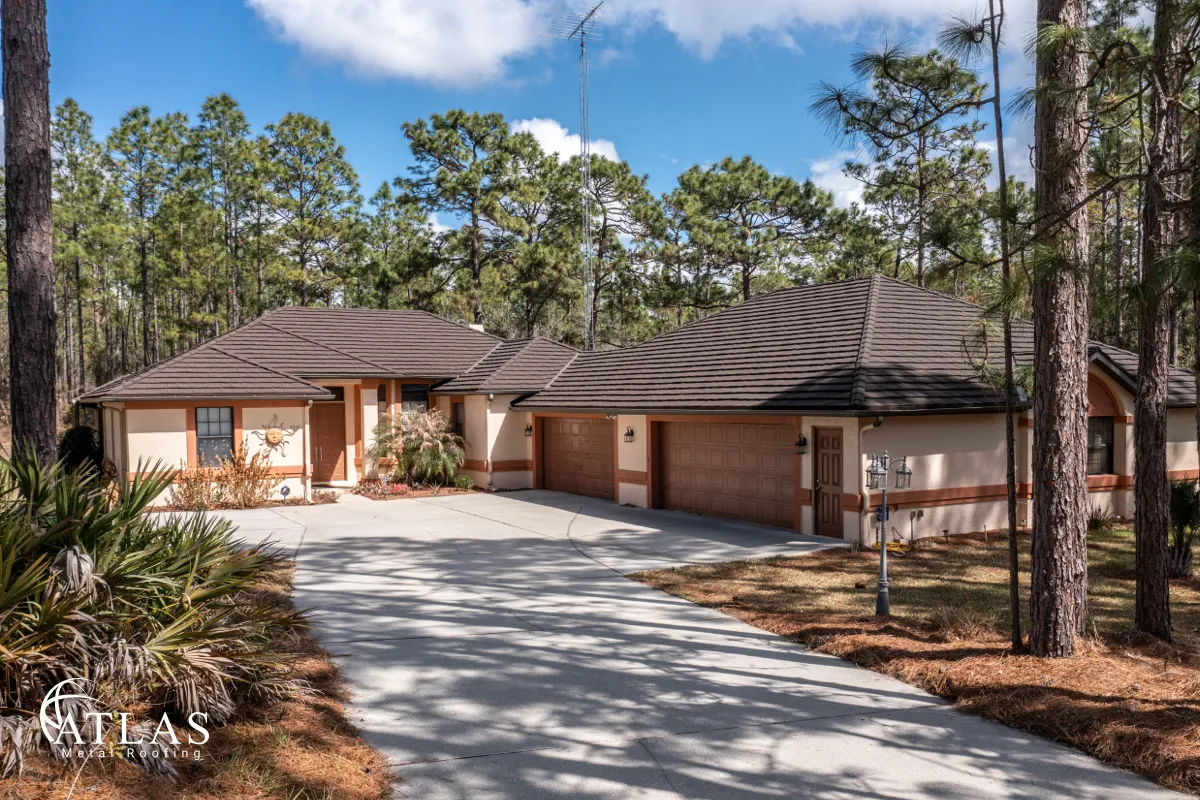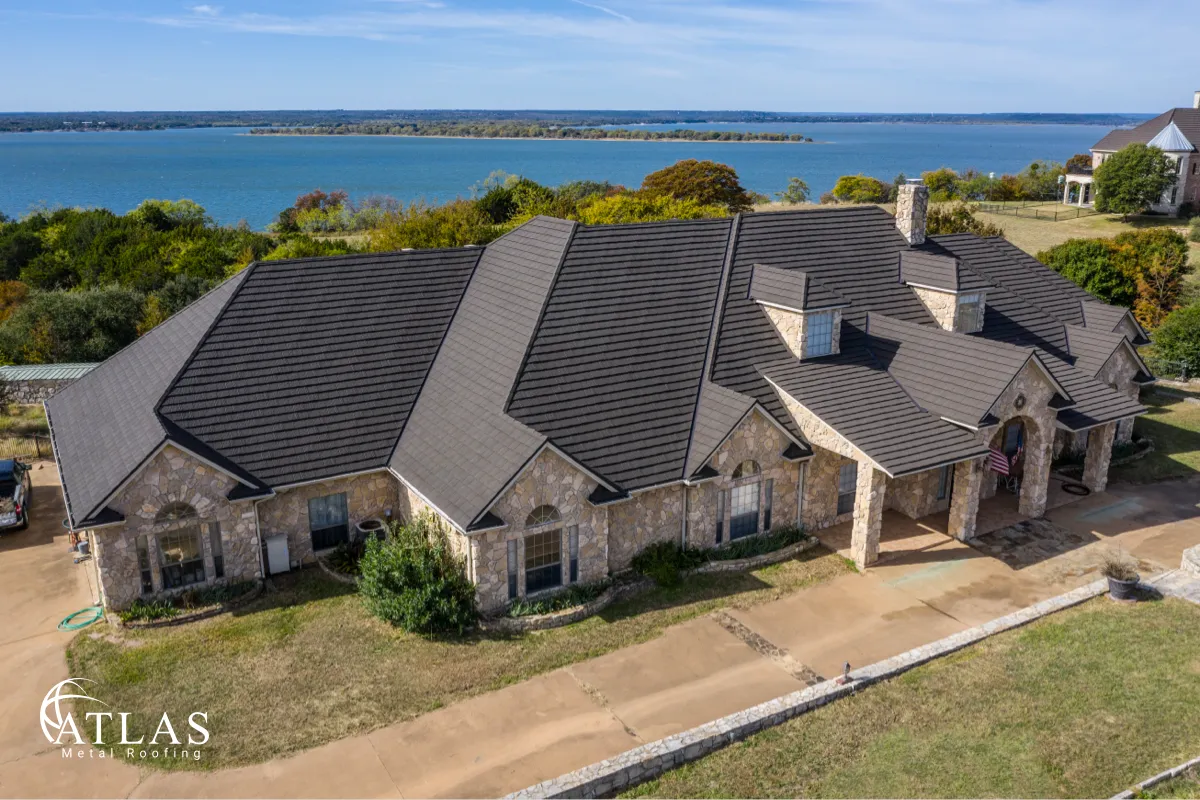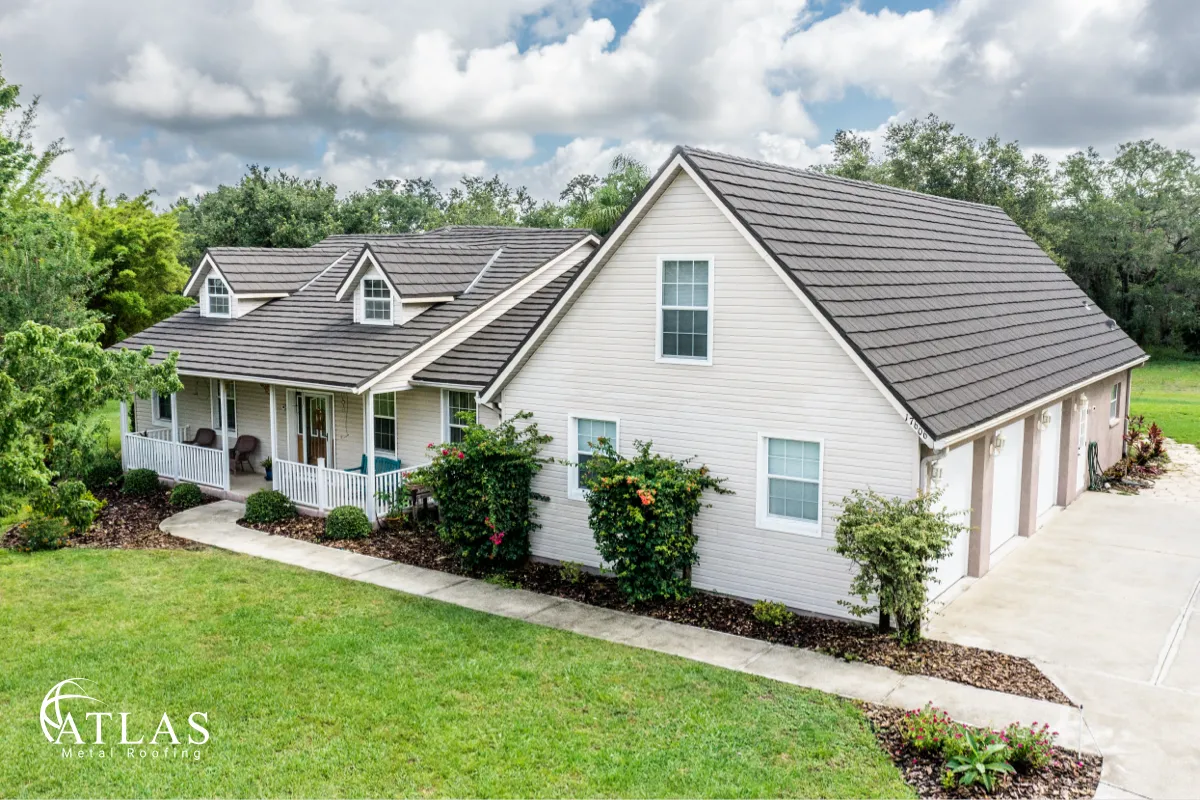Stone-Coated Metal Roofing For Older or Historic Homes
Atlas Metal Roofing offers stone-coated metal roofing that preserves historic character while delivering modern performance. This guide explains energy efficiency, longevity, aesthetic options, installation planning, maintenance routines, and cost versus value for older and historic homes. You will also see where ceramic coated metal roofing fits when higher reflectivity is required, since cool roof terms like solar reflectance index and thermal emittance often come up in historic districts.
Why Stone-Coated Metal Makes Sense On Older Structures
Stone-coated metal roofing preserves curb appeal while providing strength, fire resistance, and weather protection. The granular texture looks authentic from the street and hides small scuffs or dust that smooth painted metal can show. The interlocking panel design resists wind uplift, and the steel core handles hail better than most alternatives.
Design harmony on historic blocks improves resale value and neighborhood satisfaction. With shake, barrel tile, and dimensional shingle profiles, a stone-coated system blends into periods such as Craftsman, Tudor, and Mid-Century ranch. When boards favor traditional textures, stone-coated profiles often pass review with fewer revisions than smooth finishes.
Materials, Substrates, and Corrosion Resistance
Corrosion-resistant substrates protect older framing from leaks and staining. Panels are typically Galvanized or Galvalume steel, and both perform well when matched with the correct primer, fasteners, and underlayment. Galvalume offers excellent protection along edges, while Galvanized delivers strong all-around durability.
Compatible fasteners and sealants on aged decks prevent galvanic reactions and early failure. Use fasteners that match the panel’s coating system and maintain proper seating. At cuts and eaves, edge treatment stops rust, especially in coastal or humid climates where salt and moisture increase corrosion risk.
Energy Efficiency, SRI, and Thermal Emittance
Cool roof metal solutions for historic homes lower attic temperature and reduce air conditioning run time. Stone granules moderate heat flow with texture and mass, and lighter colors improve reflectance. Pairing stone-coated systems with well-designed attic ventilation multiplies the comfort gain.
Solar reflectance index helps predict heat gain in sunlight. SRI combines solar reflectance and thermal emittance into one score so owners can compare finishes quickly. Thermal emittance explains how fast a roof releases the heat it does absorb, which helps houses cool down after sundown. If a project requires very high reflectivity, ceramic coated metal roofing on a standing seam profile can deliver top SRI values, yet many historic districts prefer stone-coated textures because they blend better with period materials.
Table 1 Energy and Appearance Comparison
| Feature | Stone-Coated Metal | Ceramic-Coated Metal | Asphalt Shingles |
| Visual character | Textured, historic friendly | Smooth, modern painted | Granular, common |
| SRI potential | Moderate to strong with light colors | High with light colors and cool pigments | Low to moderate |
| Thermal emittance | Good with ventilated assembly | High with cool coatings | Moderate |
| Curb appeal in historic areas | Excellent match to shake, tile, shingle | Mixed results with boards | Familiar but shorter life |
| Typical lifespan | 40 to 70 years | 40 to 70 years | 15 to 25 years |
Aesthetic Options That Respect History
Aesthetic finishes for older homes deliver color palettes and textures that echo original materials. Earth tones, charcoal, weathered wood, and clay-inspired hues coordinate with brick, limestone, stucco, and painted wood trim. Matte and low-gloss finishes keep glare down on streets with close setbacks.
Profile selection for heritage projects shapes how the roof reads from the sidewalk. Shake profiles suit Craftsman and lodge styles. Barrel tile profiles complement Mediterranean and Spanish Revival. Dimensional shingle profiles fit Colonial, Tudor, and many ranch homes. Strong fade and chalk ratings keep color consistent for decades.
Table 2 Heritage Profile Matrix
| Home Style | Recommended Stone-Coated Profile | Palette Guidance |
| Craftsman, Bungalow | Shake profile | Weathered cedar, warm browns, muted greens |
| Victorian, Tudor, Colonial | Dimensional shingle profile | Charcoal, slate gray, deep earth tones |
| Mediterranean, Spanish Revival | Barrel tile profile | Terracotta, clay, sand, soft taupe |
| Mid-Century Ranch | Dimensional shingle or low-profile shake | Driftwood gray, ash, subdued neutrals |
Installation Planning For Older and Historic Homes
Pre-installation planning on legacy structures ensures long service life and clean inspections. Inspect the decking for rot, uneven planes, and previous patches. Verify truss or rafter spacing and confirm load paths. Add or update underlayment and ice and water protection where required by code and climate.
Historic district compliance moves faster with clear submittals. Include profile samples, color chips, and photos of comparable installations. When a smooth modern look is requested, present a cool roof metal option with ceramic coated data while also showing the textured stone-coated alternative that better fits period architecture.
List 1 Pre-Install Checklist For Older Homes
- Measure planes and straighten lines so panels seat flat
- Repair soft decking and verify pull-through resistance for fasteners
- Confirm ventilation from eaves to ridge for steady airflow
- Provide profile and color samples early for board review
- Stage flashings and trims for chimneys, dormers, and valleys
Craft and Detailing That Keep Water Out
Proper flashing and trim work control every place water might enter. Valleys, sidewalls, chimneys, dormer cheeks, and roof-to-wall transitions deserve careful layout and fastening. Use manufacturer trims and follow fastening patterns that stop capillary action.
Underlayment choices support a dry and quiet assembly. Synthetic underlayments resist tearing and perform well under interlocking panels. In hot markets, choose products rated for longer exposure windows during staging, which helps crews stay efficient without risking the deck.
Metal Roof Maintenance That Preserves Appearance
Simple maintenance extends service life and keeps the surface looking fresh. Most owners only need seasonal inspections and quick cleaning where trees drop pollen or leaves. The textured granules hide light dust and minor wear, which helps older homes stay tidy without frequent washing.
Gentle cleaning methods protect pigments and sealants. Use a low-pressure rinse, a soft brush, and neutral cleaners when needed. Keep gutters and valleys clear so water does not sit against edges, and photograph conditions for records that support any future warranty claim.
List 2 Annual Maintenance Routine
- Rinse dust and pollen in spring and fall
- Inspect flashings, fasteners, and penetrations twice per year
- Clear gutters and valleys after storms or heavy leaf drop
- Log photos of each visit to track age and color stability
- Touch up minor scrapes with approved finish kits if needed
Table 3 Maintenance Planner At A Glance
| Task | Timing | Purpose |
| Visual inspection | Spring and fall | Catch loose fasteners or flashing gaps |
| Gentle wash | Spring and fall | Remove grime that holds moisture |
| Gutter and valley clearing | As needed | Prevent standing water and corrosion |
| Photo and note log | Each visit | Document condition for boards and warranty |
Longevity Of Stone-Coated Systems In Real Weather
Long service life depends on quality materials, correct installation, and steady care. In most climates, a stone-coated roof delivers forty to seventy years of performance when installed over sound decking with proper ventilation. Interlocking panels resist uplift and the granular face shields the finish from UV stress.
Warranty terms reflect strong confidence in both the substrate and the finish. Many programs include transferable coverage that helps resale. To keep protection intact, contractors should follow manufacturer instructions for fasteners, underlayment, and trims, and owners should retain maintenance records.
Ceramic-Coated Alternatives Where Reflectivity Rules
Ceramic coated metal roofing offers high SRI where a board allows smooth painted metal. A ceramic roof coating over factory-finished panels can raise solar reflectance and thermal emittance for maximum summer comfort. Use light colors to improve SRI and confirm aged values from product data, especially on blocks where glare might concern neighbors.
Heat reflective roof coating can support comfort on auxiliary roofs. Even where stone-coated texture is preferred, certain porch roofs or low-slope connectors may benefit from a cool roof detail. Coordinate color and sheen to keep the finished look consistent across elevations.
Color Stability, UV, and Fade Resistance
Color fade resistance protects the roof’s appearance across decades of sun. Choose UV-stable pigments and finishes with documented chalking ratings. The stone-coated texture reduces glare and disguises small changes over time, which helps the roof keep a day-one look.
Matching roof hues to trim and masonry creates a cohesive frontage. Deep charcoals flatter brick and stone. Warm browns and weathered cedar tones pair well with wood siding and timber accents. For light painted trims, ash and slate keep contrast tidy without making the roof the focal point.
Comfort, Noise, and Everyday Living
Energy efficient metal roof assemblies improve indoor comfort without heavy structural changes. By reducing heat gain, the attic stays cooler and the AC cycles less. That helps fragile plaster or lath walls avoid moisture swings that can lead to cracking.
Good sound control on metal roofs depends on underlayment, ventilation, and attic insulation. With a well-built assembly, rain noise remains low. The interlocking stone-coated surface, combined with balanced airflow, keeps the acoustic profile comfortable for everyday living.
Cost Versus Value For Owners And Buyers
Cost versus value favors long-term savings over a low upfront price. While the initial invoice may be higher than shingles, the lifespan, low maintenance, and steady appearance pull total cost of ownership down over the years. Buyers appreciate roofs that look classic and do not need early replacement, which supports stronger appraisals.
Financing choices help owners move projects forward. Utility rebates sometimes apply to qualifying cool colors, and promotional financing can spread payments without delaying needed work. When the numbers are presented clearly, owners see why the value equation points to metal.
Quick Selection Framework For Historic Projects
A simple selection framework guides the conversation toward the right profile and color. Start with the style of the house, then confirm board preferences and neighbor context. Match profile to period, choose a palette that respects existing materials, and confirm energy goals with SRI targets and ventilation upgrades.
Contractor documentation helps approvals move faster. Include technical sheets for stone-coated profiles, sample photos from similar blocks, and ceramic coated alternatives for auxiliary roofs when needed. Clear packages earn faster green lights and fewer rework requests.
List 3 Top Reasons To Choose Stone-Coated For Historic Homes
- Historic texture that matches shake, tile, or shingle while adding metal strength
- Strong wind and hail resistance with interlocking panels that protect edges and seams
- Low-gloss, low-glare surfaces that please neighbors and preservation boards
- Long service life that lowers total cost of ownership and supports resale value
- Simple maintenance that keeps older homes looking tidy year after year
Frequently Asked Questions That Contractors Hear
Historic district rules often shape profile and color selection. Many boards welcome textures that read traditional and may limit shiny finishes that look out of place on a vintage street.
Metal roof maintenance on stone-coated systems is straightforward. Plan seasonal inspections, gentle rinsing, and clear gutters, or hire an annual service to keep records ready for any warranty need.
Lifetime guarantee roofing typically covers material defects under stated terms and may transfer to new owners. Review material and workmanship coverage separately so roles are clear if a claim is ever needed.
Putting It All Together On Real Projects
A stone-coated roof on an older home balances period-correct appearance with modern performance. The result is a quiet, dry, and comfortable house that neighbors admire and buyers value. If a block or a board requests higher reflectivity, introduce cool roof data and limited use of ceramic technologies on less visible surfaces while keeping the main roof mass textured and authentic.
Clear planning, careful detailing, and regular care produce the outcome older homes deserve. Respect the structure, choose the right profile and palette, confirm SRI and thermal emittance where comfort is a priority, and document everything from submittals to maintenance logs. Atlas Metal Roofing can guide the process from design through installation so the roof looks right and performs well for decades.
